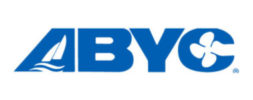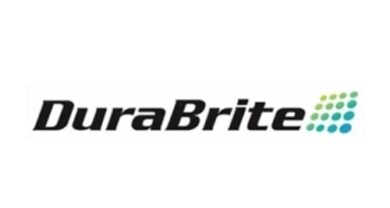Marine software – Get onboard or get left behind
Using a pen and paper to keep track of the day-to-day operations of a business is like using oars to row a 20-foot cabin cruiser across Lake Michigan. Given enough time and effort, you may eventually get where you’re going, but good luck keeping up with those powered by propellers.
Unfortunately, far too many companies in the marine industry have yet to fully embrace computerization, much less the many advantages a computerized business management system can offer to marine business owners today.
“When you take an automobile store or an RV shop, they’ve been computerized for years. The marine industry is sort of the last to come around,” says David Bledsoe of Paulson Computer Systems. “Some guys say, ‘Well, I know every part there is in my mind.’ God help you if you get hit in the head. You can’t run million-dollar businesses like that anymore.”
Glenn Bryant of Business Information Technologies agrees.
“There’s still a bunch [of marine businesses] out there that don’t have a business management package in place,” Bryant says. “They have a computer or two for getting parts and stuff, but they’re basically still manual. I would guess it’s between a quarter and half of the industry.”
However, times are changing, and as has been the case across the American business landscape, computer software firms are at the forefront of those changes.
Things are no different for the marine software segment, which is busily working to create products that will continue to serve the changing needs of customers and lure marine businesses into taking that first step onto the information superhighway.
One of the heavyweights of the marine software segment is DockMaster — a product of Exuma Technologies, Inc. — which is one of the oldest and largest companies in the field. Founded 20 years ago, today the company’s software is used by approximately 650 businesses with a total of 3,200 users. DockMaster Software Systems has customers in 43 states as well as in the Caribbean and Central America. It has also just opened a partnership in the United Kingdom and developed a version of its software for the European market.
“I don’t know of any other product that is fully integrated for a full-service marina – meaning a marina that does boat sales, service, has a parts department, a shipping store and accounting,” says Peacock, who is now the company’s sales manager. “There aren’t any other fully integrated systems out there on the market.”
However, several companies are developing products for a segment of the industry they say is being neglected when it comes to marine software.
Integrated Dealer Systems and WatchCaptain say they are developing software targeted at the smaller marine businesses unable to afford or implement the marine software packages currently available.
“We have identified mid-sized dealers, those who do between $3 to $10 million annually in revenue, as a market opportunity,” says Dean Hardy, IDS dealer development manager. “We believe that segment has been underserved by some of the software vendors. And some of [the mid-sized dealers] that have purchased software applications aren’t using them to their fullest extent.
“We’ve developed a different implementation process we call Astra Express. It’s designed to help single-location, mid-sized dealers to be able to take more control of their implementation process. What we’ve done is take out a few of the more complex areas of the software, some of the modules those midsize dealers don’t need and by experience weren’t using anyway.”
The belief that small and mid-sized dealers lack software designed specifically for them is shared by WatchCaptain, which did market research to determine the viability of the product it was developing. The results “pleasantly surprised” the company, according to Tony Pimentel, who is the software architect.
“We made a determination earlier this year that we really wanted to pursue a tiered product strategy,” Pimentel said. “It looked like 80 to 85 percent of the yards in the market were made up of under 10 employees. There are already plenty of solutions out there for the larger yards.
“These smaller to medium-sized businesses really have no options other than a custom package, which is expensive and often not right for them, or the spreadsheets, Quickbooks, Peachtree route.”
Pimentel believes WatchCaptain 2005 will be unique for its combination of price and functionality.
DockMaster’s Peacock says he can understand the niche WatchCaptain is trying to carve out for itself, but he argues that small boat yards have the same needs as larger ones.
“You want a system you can grow into and not out of,” Peacock says. “Smaller yards still need to write orders for parts, sell parts, write work orders and invoice them. I’ve got tons of customers who have four and five employees that do $300,000 to $400,000 a year in sales. [WatchCaptain] would like to think we only want the multimillion-dollar dealer or boat yard. That’s not the case.”
BIT’s Bryant says he doesn’t believe smaller marine businesses have been without software options in the past, noting that while his biggest customer does approximately $25 million a year in business and his smallest does closer to $250,000, they both are able to use the software program his company sells.
Bledsoe believes serving smaller businesses is what Paulson does best.
“That’s probably our forte,” Bledsoe says. “A lot of our customers have one or two users, whereas DockMaster and IDS will have the big stores, the multi-unit stores with 50 to 60 users. We have a few big companies, but that’s not our business. Our business is the small companies.”
However, WatchCaptain is confident it has identified a market with strong sales potential.
“Looking at our numbers and where we are, we’re feeling very, very good about the opportunities,” Pimentel said. “Now it’s what we do with them.”
Most of the marine software companies agree that improving communications between dealers, builders, suppliers, repairers, etc., is an important goal, and helping facilitate integration among companies that do business together is a software function many desire.
“People spend a lot of time on the phone, a lot of time faxing orders back and forth,” Pimentel says. “To give them the ability to order right out of their software and have the order go to the vendor or supplier, have it fulfilled, have an acknowledgement come back, be able to track all of that, have money change hands and everything else through the system, ultimately I think a lot of people would like to get there.
“But I think we’re a ways away from that. I think people are still scared of computers.”
The industry itself seems to be driving some of the advancements that have been made. Bryant says BIT is constantly making changes to its software in response to the needs of his customers.
“We’re constantly making changes, but primarily we’re making them at the behest of the industry,” Bryant says. “When Mercury changes the way in which its dealers can communicate or get information, then our business management package has to support that.
“We spend a bunch of our time just updating our programs to be able to respond to changes that Mercury or BRP make. As the technology increases, the engine manufacturers and the aftermarket guys are starting to make use of both the increased technologies and the Internet to allow the dealers to communicate back and forth with them.“
Change may be the only constant when it comes to marine software, but computerization is an undeniable part of the industry today and its influence will only continue to grow. As it does, businesses that take advantage of these important tools will prosper, and likewise the prosperity of the marine software segment itself also seems assured.
— Jonathan Mohr




